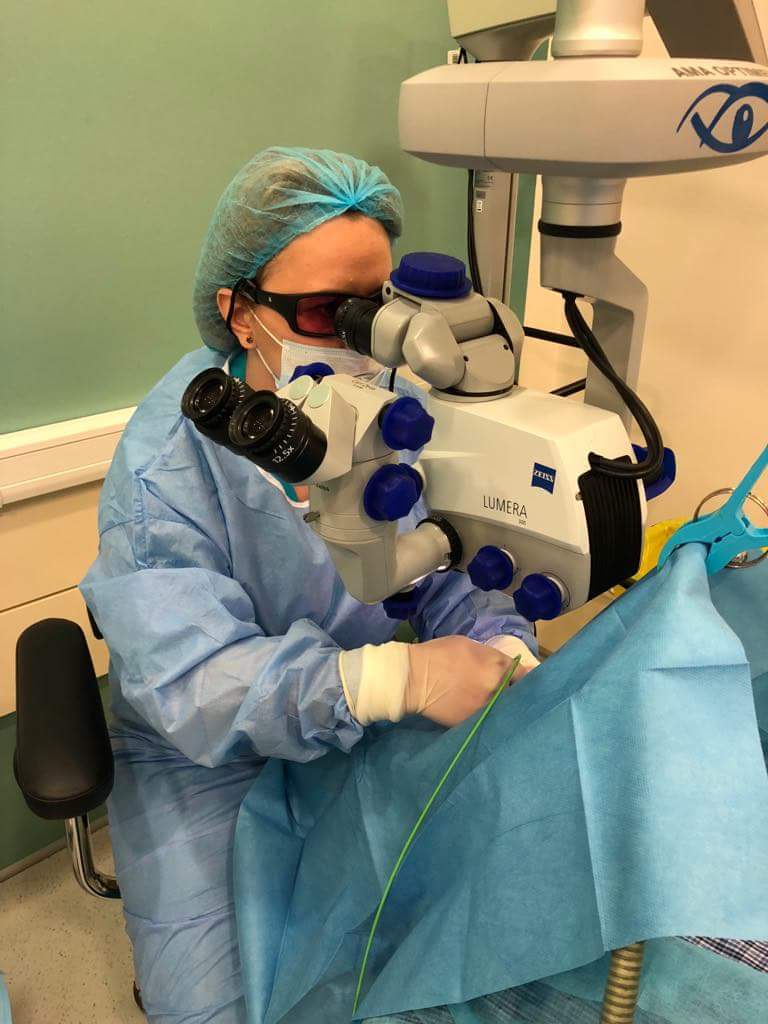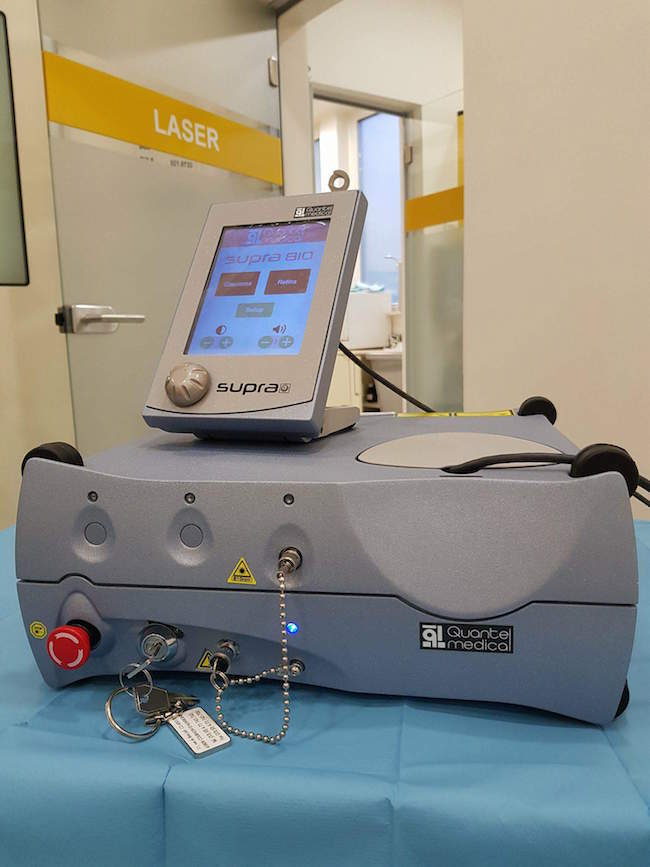Laser - a new procedure for improving glaucoma

Glaucoma may occur at any age, even in children, but is more common in people over the age of 40. Also, people who have previously had glaucoma in the family have a higher risk of developing the disease. It is a progressive disease that lasts for the entire life, for which no cure is yet known to cure it. But with proper treatment, sight can be preserved for life. Recently, a procedure called laser subcyclophotocoagulation (or subliminal cyclo-photocoagulation) can be done in Romania to reduce eye strain in patients with glaucoma through a short-term and minimal procedure. We talked in an exclusive interview with Dr.
Doctor. Irina Lutic, an ophthalmologist who performs this procedure for improving glaucoma. What Doctor Do: What is Glaucoma? . Irina Lutic: Glaucoma defines a group of diseases characterized by progressive damage to the optic nerve, which results, in the absence of adequate treatment, in the irreversible loss of vision. Q: What are the main factors that cause the disease? .
: To date, the mechanism of glaucoma is not known exactly, but there are risk factors for this condition. High intraocular tension is the major risk factor in the development of glaucoma and, at the same time, the only one on which we can intervene through various therapeutic means. Proper control of intraocular pressure reduces the risk of damage to the optic nerve and stops or slows the progression of the disease. Another important risk factor is heredity, so that the progeny of glaucoma have a higher risk of developing this disease over the course of their life. D: How is it detected? .
: To diagnose glaucoma, a complete ophthalmologic consultation is needed to get glaucoma suspicion. Confirmation of this diagnosis is by specific ophthalmologic investigations. During the ophthalmologic examination, the intraocular pressure will be measured, the iridocornean angle will be examined and the visual nerve will be assessed by examination of the eyebrow. When the obtained values suggest a possible pathological aspect, we will complete the clinical examination with a visual field examination and an optic nerve tomography. Other complementary investigations are pacimetry - corneal thickness measurement (a reduced thickness of this first ocular layer is a risk factor for glaucoma) and anterior polar tomography in which the iridocornean angle is measured (allows for narrow-angle glaucoma diagnosis).
D: What is the treatment? . : Treatment depends on the form of glaucoma. In the case of newly diagnosed open angle glaucoma, drug therapy (drops). If proper intraocular pressure and disease progression is not adequately controlled and / or opt for surgery. For narrow-angle glaucoma, the first treatment initiated is laser iridotomy (a laser procedure designed to prevent iridocornean angle closure and thus glaucoma attack), supplemented according to evolution with medical, laser and surgical treatment as needed.
C. D: Did I understand that there is now a revolutionary treatment in Romania? . : In our clinic, we have the SUPRA 810 Laser with which we undertake a procedure called laser subcyclococoagulation (or subliminal cyclo-photocoagulation) that allows us to reduce eye strain in patients with glaucoma through a short-term and minimal procedure. C. D: What does it do? .
: The laser acts at the level of the structures responsible for the production of aqueous humor, and by decreasing the production of this fluid, but also by increasing its elimination through the uveoscleral pathway, it causes the decrease of the intraocular pressure. The surgery is performed by the ophthalmologist in the operating room under the control of the operator microscope. The procedure requires local anesthesia with periocular injections and consists in placing on the surface of the eyeball a probe through which the laser acts. The actual duration of the treatment is 100-180 seconds. C.
D: Who can do it? . : This treatment is indicated in all types of glaucoma in which adequate control has not been obtained by any other therapeutic or drug and / or surgical treatment. Q: What are the contraindications? . : Contraindications to this procedure are major coagulation disorders due to anesthetic risk and active eye infections. Q: What are post laser indications? .
: At the end of the patient's intervention a sterile dressing is given to him for a few hours and even from the day of the procedure he will start a drop treatment (an anti-inflammatory drug) that will last for 2-3 weeks. The treatment for glaucoma is continued with the same schedule as before surgery, being subsequently altered by the ophthalmologist depending on the evolution of intraocular pressure. There are no major postseason restrictions, so the patient can resume his activities the day after the procedure. .
Source : csid.ro
Views : 3144
Popular Article
- (photo) Nude becomes art.
Posted: 2018-03-17, 9706 views.
- The harmful effects of air conditioning on the skin
Posted: 2017-06-08, 8394 views.
- 3 causes of dyed hair discoloration
Posted: 2017-06-15, 8266 views.
- Why early puberty occurs in girls: symptoms, favors, diagnosis and treatment
Posted: 2017-10-24, 8113 views.
- Good or bad skin treatments in the hot season
Posted: 2017-06-07, 7846 views.
Recommendations
- (photo) Nude becomes art.
Posted: 2018-03-17, 9706 views.
- The harmful effects of air conditioning on the skin
Posted: 2017-06-08, 8394 views.
- 3 causes of dyed hair discoloration
Posted: 2017-06-15, 8266 views.
- Good or bad skin treatments in the hot season
Posted: 2017-06-07, 7846 views.
- Risks of practicing sports on hot days
Posted: 2017-06-12, 7443 views.


 4 effective ingredients in the fight against acne.
4 effective ingredients in the fight against acne. How to get rid of hiccups fast
How to get rid of hiccups fast The wheat bran diet: the secret of lost pounds as if by magic
The wheat bran diet: the secret of lost pounds as if by magic The recipe that will sweeten your soul this weekend!
The recipe that will sweeten your soul this weekend!  Is it dangerous or not to refreeze meat after thawing it?
Is it dangerous or not to refreeze meat after thawing it?  The unusual sign of diabetes indicated by saliva.
The unusual sign of diabetes indicated by saliva. What to drink to boost your immune system.
What to drink to boost your immune system. 10 foods that help you never age.
10 foods that help you never age. What actually happens in your body if you drink a cup of coffee for breakfast
What actually happens in your body if you drink a cup of coffee for breakfast 5 surprising benefits of chia seeds
5 surprising benefits of chia seeds